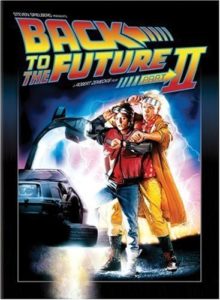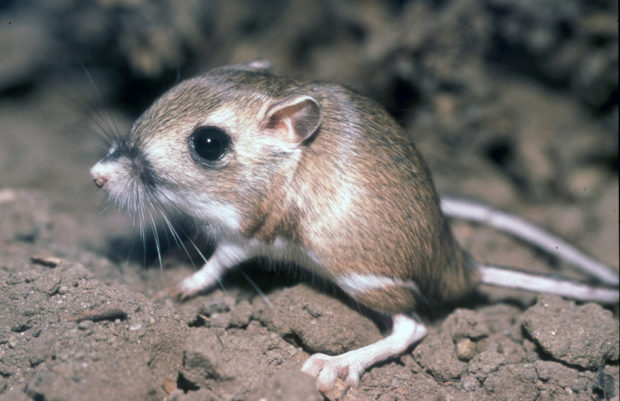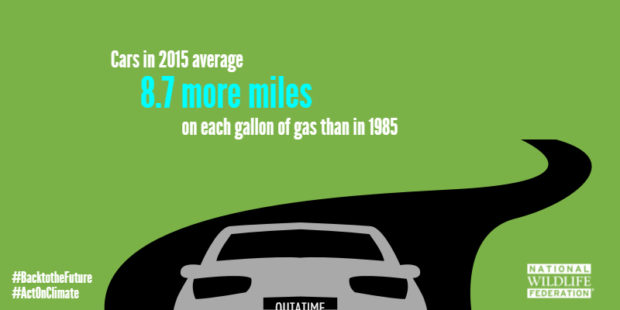We have much more to do and your continued support is needed now more than ever.
The Future is Today!

Although our 2015 doesn’t exactly match with the imaginings of Zemeckis and executive producer Steven Spielberg, the arrival of October 21, 2015 does beg the question: what would Marty McFly and Doc Brown think of our world today?
A lot has certainly changed. We’ve traded in giant car phones for smartphones, mixtapes for playlists, Aerobicize for Barre Workouts, and Tom Hanks for…. actually, we will never trade him in BECAUSE HE IS AN AMERICAN TREASURE. But more than that, the very environment in which we live has changed dramatically as a result of climate change.
So let’s take a look at a few key differences that Marty and Doc would see if they stepped out of the DeLorean today:
Shrinking Wildlife Populations

This is largely attributed to human activity, including deforestation, overfishing, pollution and habitat destruction—all of which are exacerbated by climate change. The good news? A new report from the Center for American Progress notes that the Endangered Species Act (ESA) has been working – preventing wildlife species that are near extinction from vanishing completely. Unfortunately, those species at a lower risk of extinction are seeing rapid population decline.
A Much Drier Hill Valley
Hill Valley is a fictional town—though it will be a real place for a few days—but the state of California is definitely in real trouble from drought. The years-long troubles from drought are part of a trend of drier conditions that tie back directly to climate change. Warmer winters have led to a severe decrease in snowpack (down to just 5% of normal), a source that California relies on heavily in the summer months. The drought has had a particularly severe impact on wildlife from waterfowl to mountain lions and especially endangered species like the giant kangaroo rat!
In the immortal words of Marty McFly, “Heavy.”

Higher Average Global Temperature
Marty might find things a bit warmer, with the global annual average temperature lying roughly 1°F higher today than it was in 1985. In fact, February 1985 was the very last time that the world was cooler than its 20th century average.
Increases in temperature can have devastating impacts for wildlife and people alike. For example, moose require cool climates to thrive and are especially at risk from a warming climate, as warmer temperatures cause them to overheat and become prone to diseases and tick infestation.
More Efficient Cars
Thankfully, not all of the changes are bad. Our cars might not fly, but they certainly are doing less damage to the environment than in 1985. Back in 1975, Congress passed the Corporate Average Fuel Economy (CAFE) standards in order to improve fuel efficiency for cars and light trucks produced or sold in the United States. As a result of technology improvements and better CAFE regulations, fuel efficiency has increased by 8.7 miles per gallon for passenger cars since 1985.

Greater World Energy Mix
Good news! Though the impacts of climate change have risen dramatically since 1985, so has our use of renewable energy. According to the Renewable Energy Policy Network (REN21), roughly 19% of world-marketed energy consumption is from renewable energy sources, and in 2014 there was more global power capacity added through renewable energy than coal and gas combined.
The United States now has thirty-six times as many wind farms as it did in 1985, allowing us to power nearly 15 million more homes from wind farms today than in Marty McFly’s time. Taking steps to reduce our dependence on fossil fuels and address climate change is good news for species like the sea turtle, whose habitat is disappearing due to sea-level rise.
Take Action
So while Marty and Doc’s 2015 may not be quite the same as ours, we still have a chance to keep our future bright.






















